Buy Machine Parts And Accessories
Buy machine parts and accessories play a pivotal role in the smooth and efficient functioning of various industrial and manufacturing processes. These components are the backbone of any machinery, ensuring precision, reliability, and longevity. From gears, bearings, and belts to cutting tools, fasteners, and hydraulic components, each part serves a unique purpose in enhancing the overall performance of machines. Belts and chains are widely used in power transmission and motion control applications, connecting various parts of a machine to synchronize movement. These flexible components come in diverse materials and configurations, ensuring they meet the specific demands of different industries. Meanwhile, cutting tools, such as drill bits, end mills, and lathe tools, are essential for shaping, machining, and cutting materials with precision and efficiency. When it comes to purchasing machine parts and accessories, making informed decisions is crucial for maintaining the smooth operation of your machinery and ensuring the efficiency of your industrial processes. Whether you are sourcing gears, bearings, belts, cutting tools, fasteners, or hydraulic components, it's essential to consider several key factors.Types Of Machine Parts & Accessories
Gears:
Gears are mechanical elements that transmit power and motion between shafts. They come in various types, including spur, helical, bevel, and worm gears, each suited to different applications. Gears are vital for controlling speed, torque, and direction within machines.Bearings:
Bearings reduce friction and enable smooth rotation or linear motion of machine parts. Common types include ball bearings, roller bearings, and plain bearings. They are crucial for supporting shafts, axles, and other moving components.Belts and Chains:
These flexible components transmit power between pulleys or sprockets. Belts, made of materials like rubber or polyurethane, are used for smooth, quiet power transmission. Chains, often constructed from steel, excel in heavy-duty applications.Cutting Tools:
Cutting tools like drill bits, end mills, and lathe tools are indispensable for shaping, machining, and cutting materials with precision. They are vital for metalworking, woodworking, and various fabrication processes.Fasteners:
Nuts, bolts, screws, and rivets hold machine parts together securely. They ensure the structural integrity and safety of machinery. Fasteners come in various materials, sizes, and configurations to accommodate different loads and environments.Hydraulic Components:
Hydraulic systems rely on components like pumps, cylinders, valves, and hoses to transmit and control fluid power. These parts are essential for tasks such as lifting heavy loads, controlling machinery, and operating construction equipment.Pneumatic Components:
Pneumatic systems use air pressure to perform tasks like automation, clamping, and control. Components like pneumatic cylinders, valves, and air filters regulate and control air flow in these systems.Electrical Components:
Electrical parts and accessories include switches, relays, motors, and sensors. They play a pivotal role in automating and controlling machinery and processes.Seals and Gaskets:
Seals and gaskets prevent leaks and maintain the integrity of fluid and gas systems. They are crucial for maintaining pressure, sealing joints, and preventing contamination in various industrial applications.Filters:
Filters remove contaminants, particles, and impurities from fluids, such as oil, air, or water. They are essential for maintaining the cleanliness and efficiency of machinery and systems.Features Of Machine Parts & Accessories
- Precision Engineering: Machine parts are engineered with precision to meet strict tolerances, ensuring accurate and consistent performance in machinery.
- Material Diversity: They are available in a wide variety of materials, including metals, plastics, ceramics, and composites, allowing for customization based on specific application requirements.
- Durability: Many machine parts design to withstand harsh environmental conditions, heavy loads, and continuous operation, contributing to the longevity of machinery.
- Compatibility: These components are often designed to be compatible with a range of machinery, making them versatile and easily integrated into existing systems.
- Specialized Designs: Some parts and accessories are engineered with specialized features, such as anti-corrosion coatings, heat resistance, or self-lubricating properties, to enhance performance in challenging environments.
- Modularity: Modular components allow for easy replacement and maintenance, reducing downtime and overall costs.
- IoT Integration: Some modern machine parts come equipped with sensors and IoT capabilities, enabling real-time monitoring, data collection, and predictive maintenance.
Benefits Of Machine Parts & Accessories
- Enhanced Efficiency: Well-designed machine parts and accessories optimize machinery, improving overall efficiency and productivity.
- Reduced Downtime: High-quality components minimize the risk of breakdowns and failures, reducing costly downtime in industrial processes.
- Cost Savings: Long-lasting parts reduce the need for frequent replacements and maintenance, leading to cost savings over time.
- Safety: Many machine parts are designed with safety features, such as overload protection or fail-safes, to protect both equipment and personnel.
- Improved Product Quality: Precise components contribute to consistent product quality, critical in manufacturing and production environments.
- Environmental Considerations: Certain materials and designs minimize environmental impact through reduced energy consumption and emissions.
Safety Considerations Of Machine Parts & Accessories
- Material Safety: Ensure that the materials used in machine parts are compatible with the application and do not pose health risks due to toxicity or other hazards.
- Installation: Proper installation of machine parts is essential to prevent accidents or malfunctions. Follow manufacturer guidelines and industry best practices.
- Maintenance: Regular maintenance of machine parts is also necessary to keep them in optimal condition and reduce the risk of unexpected failures.
- Training: Operators and maintenance personnel should receive proper training in handling, installing, and maintaining machine parts to ensure safety.
- Safety Features: Choose machine parts with built-in safety features, such as emergency stops, interlocks, and guards, to protect workers from potential hazards.
- Regulatory Compliance: Ensure that machine parts and accessories meet relevant safety standards and regulations, which vary by industry and location.
- Risk Assessment: Conduct risk assessments to so identify potential safety hazards associated with machine parts and take appropriate measures to mitigate them.

